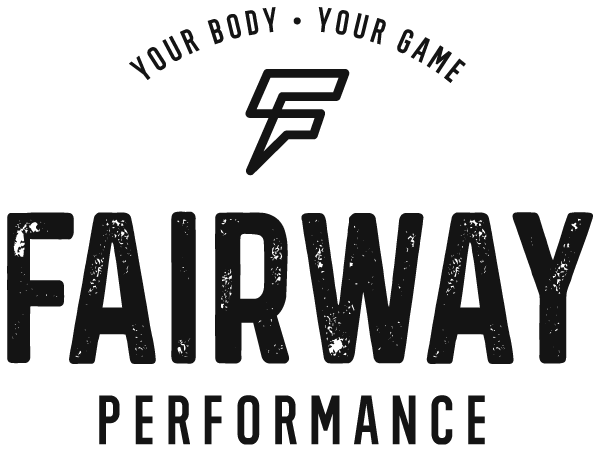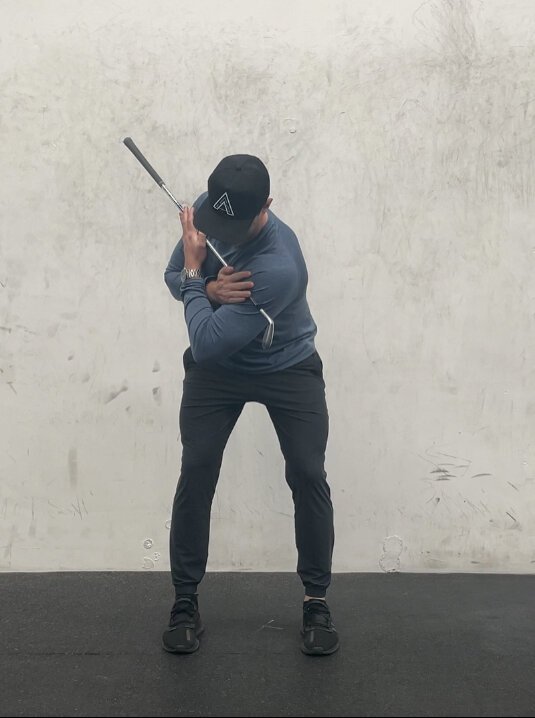How To Generate More Power In Your Golf Swing
Creating more power in your golf swing can be done in many ways. In this post I’ll explain to you the concept of separation and how being able to move your upper and lower body independently of each other can lead to a huge power increase in your golf swing but also make it much more consistent and accurate.
Firstly, what is separation in the golf swing?
When we talk about 'separation' in the golf swing we are referring to the pelvis rotating significantly faster than the ribcage in the early part of the downswing. This part of the swing is also referred to as the transition.
The pelvis turning quickly and independently of the torso enables the body to create more torque or rotational force as it lengthens the big muscles like the lats, obliques and abdominals. This leads to huge clubhead speed as the chest turns through the ball later in the downswing. The greater the separation the greater the energy/load that is created.
Rory McIlroy is a great example of someone who can dynamically separate the body. If you watch a clip of him hitting the driver watch as he starts the transition between backswing and downswing. Just before he reaches the top of his back swing his lower body begins to unwind and turn towards his target. It’s at this point where his upper body and lower body are essentially moving in opposite directions briefly which creates even more length or potential to create torque.
Separation is something the top players in the world are great at creating during their swing because they’re able to move their torso and pelvis independently of each other.
When the Titleist Performance Institute (TPI) tested Amateur golfers they found more than 50% of those tested could not move the upper and lower body independently of each other. It’s important to note when testing this it doesn’t matter how much movement you have, it matters more that you have the ability to do it. Therefore this is a qualitative test and not a quantitative test.
So how can you test if you have the ability to do this?
In the TPI screening we use 2 tests. The Pelvic rotation test and the Torso rotation test. Here’s a brief explanation of how you can perform these tests yourself.
How to Perform the Pelvic Rotation Test
Start by assuming the set up position you would hit your 5 iron in. Once here feet should be roughly shoulder width apart then take your arms and cross them over your shoulders.
From this position, keep your upper body still and try to rotate your lower body. You’re looking for rotation and not swaying side to side. If you’re performing this test by yourself, set your phone or camera up and film yourself doing it and ensure it is a rotation and not a sway. When watching the video back you want to see a fluid motion and no movement of the shoulders or upper body. It’s ok if your knees move slightly with the pelvis but there shouldn’t be excessive bending and straightening of the knees.
To go one step further and see whether this is a stability or mobility issue you can either have someone hold your shoulders in place while performing the test, hold a light weight in front of your body or place two hands on top of a golf club standing tall in front of you.
If it’s still hard to rotate the pelvis then you have mobility issues. If the support of the weight club or person holding your shoulder enables you to do the test you have a stability issue.
How to Perform the Torso Rotation Test
Start by assuming the set up position you would hit your 5 iron in. Once here feet should be roughly shoulder width apart then take your arms and cross them over your shoulders.
From this position, keep your lower body still and try to rotate your torso as if starting your backswing and then rotate to a follow through. Picture your spine as a skewer going through your body and you're trying to rotate around it. There should be no movement of the lower body when doing this.
If you’re performing this test by yourself, set your phone or camera up and film yourself doing it and ensure it is a rotation and your back of hips moving and not your upper back. When watching the video back you want to see a fluid motion and stillness in the lower body.
To determine if you have a stability or mobility issue with this test have someone hold your hips in place and try to perform the test. If you still have trouble it’s a mobility issue. If you can do the test with support it is a stability issue.
For more information about TPI screenings and what they can do to help you with your golf game please email me: shaun@fairwayperformance.com
If you want help with the commitment and support on your journey you can take me up on a 7 day free trial of the Fairway Performance Training App which is the medium I use to help golfers around the world improve what their bodies are capable of so they have the potential to play better golf. There are programs in there for golfers at any level of play and experience in the gym and guides which will help you decide at which point is best for you to start. You will also be able to direct message me through the app for any additional questions you have along the way!
If you have any other questions you can contact me in these ways:
Email: shaun@fairwayperformance.com
Instagram: @shaun.diachkoff
Here are some other articles you may want to check out:








